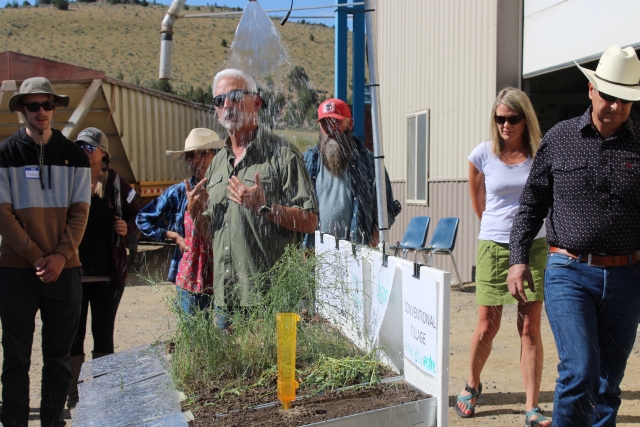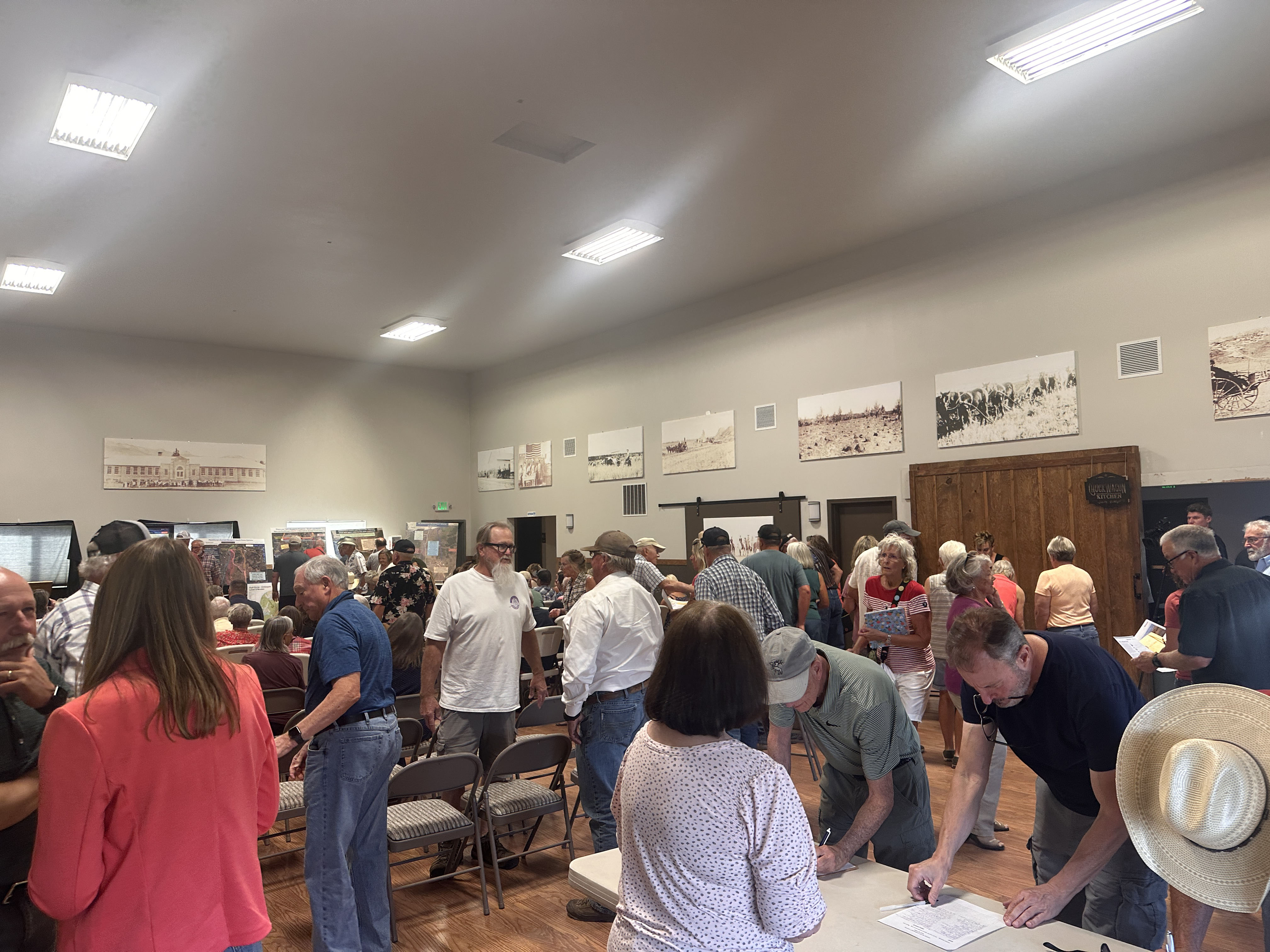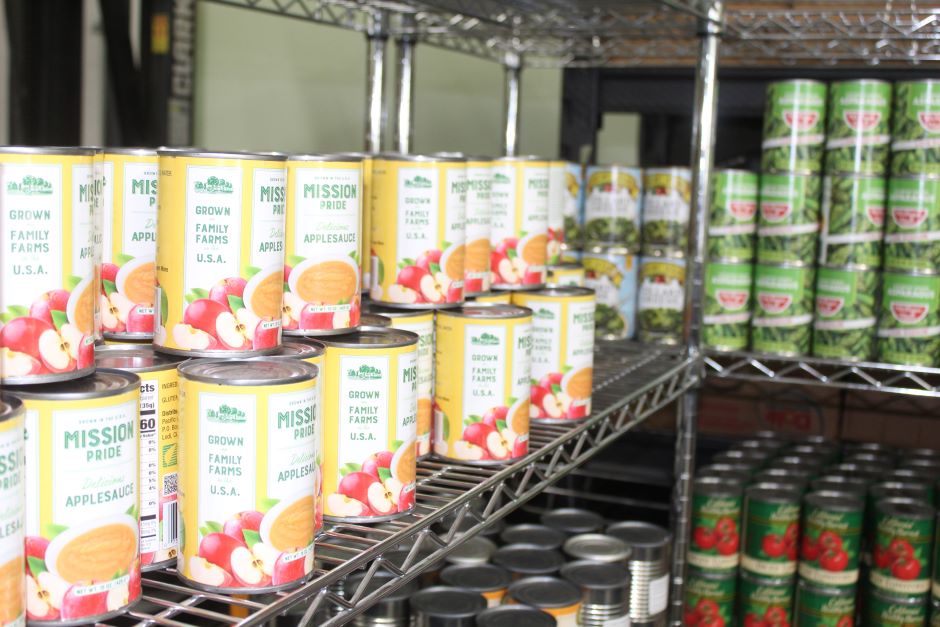Healthy soil is key to Vibbert’s success
Published 3:31 pm Monday, June 9, 2025

- The water penetration test by speaker Ray Archuleta (center), a certified professional soil scientist at the June 2024 field day, with Sean Vibbert (red hat) in background. Vibbert's soil results were rated best that day.
The Vibbert family has been farming in Gateway for six generations, and current farm manager Sean Vibbert is working hard to ensure his kids have an opportunity to come back to the farm as a healthy and viable operation.
Their acreage is at the northern reaches of the NUID irrigation canals, and the last stop before water flows back into the Deschutes River. Vibbert’s father, Bryce, foresaw the need to maintain stream health and minimize harmful runoff. After many years of farming with ‘traditional modern’ methods of tilling the soil and applying fertilizer and herbicides, Bryce noticed they were “losing the ends of the fields” to mostly weeds – weeds that thrive in anaerobic, or low oxygen, conditions.
The soil profile was changing; yields were down, germination was declining, and they had disease issues. They suspected the tractor turns were creating compaction and the extra chemicals being applied were causing soil substrate deterioration. With less crop production per acre, Bryce knew their past practices were unsustainable.
Trending
So, in 1995, the Vibberts began adding aerobic microbes, humic substances, beneficial fungi, and nutrients to restore the soil to health – applying a product called ‘Soil Alive’, which was introduced to the Vibberts by Jim Roth, a North Dakota State University graduate with a degree in Agronomy who had been involved in numerous agricultural projects including researching alfalfa, and the introduction of hybridized carrots to Central Oregon before starting his company Soil Restoration, LLC in Culver.
Sean Vibbert graduated from OSU in 1994 with a degree in animal science and organic chemistry. He also reads a lot, researching all aspects of his businesses, and he personally scouts the fields by walking them to survey for weeds and plant health. Almost overnight, he saw improvement switching practices to Soil Alive.
Current practices and Vibbert recommendations
The Vibbert’s practices now include the application of microbes, humates, beneficial fungi and nutrients – about one pint per acre annually.
These beneficial microbes perform fundamental functions like nutrient cycling, breaking down crop residue and stimulating plant growth. Nutrients in the healthy soil are taken up by the plant. The inputs help put carbon back into the soil, which also helps aerate the soil and improves water retention at the root zone.
Vibbert says he still uses chemicals, but can have a much lighter hand, and targets them to specific areas and needs. He says he rarely y has to spray for pests, which search out weaker plants in less healthy fields. He also tests his soil regularly using radionics. His soil tests have identified an increasing number and variety of microbes in his soils, up to 27 recently identified. His irrigation water penetrates the soil to the root zone where it is better utilized by the plant. Gone are the days when he’d sink up to his boot tops in mud when moving hand line. He’s also found that healthy plants can ward off a lot of diseases and pests. By putting energy back into the soil, they didn’t need to apply as much fertilizer or weed killer.
Trending
Vibbert states “Every time you harvest, you need to put the micro elements back in the soil. We can use chemicals as a tool but need to understand how to utilize that tool properly.” He uses an example: when growing a seed crop, you feed the seed, not the leafy green parts of the plant. Use over crops to put nutrients back in the soil for the benefit of the planned crop next year. Cover crops also allow the soil to rest.
Vibbert believes you can cut your chemical inputs by half if your soil is balanced. “When a plant is not balanced, it dehydrates faster and is less able to withstand drought conditions. We can recognize that unhealthy plants are under stress, and pests target stressed plants,” said Vibbert.
Vibbert also believes farmers need less nitrates than they are using because excess nitrogen encourages fungal growth. He questions the application of muriated potash, also known as potassium chloride. Potassium is known as a fertilizer to aid plants in forming healthy stems, roots, and tuber growth, especially for carbohydrate crops. Vibbert believes the chloride component kills the beneficial bacteria in the soil needed for life.
As another example, Vibbert stated that farmers in India have not had many of the problems farmers in the US have. He credits it to their more ‘natural’ farming techniques.
Vibbert hosted the Jefferson County Soil and Water Conservation District soil health field day last June at the Obsidian Seed Company warehouse, where his soil proved itself in the water penetration test conducted by speaker Ray Archuleta, a certified professional soil scientist.







